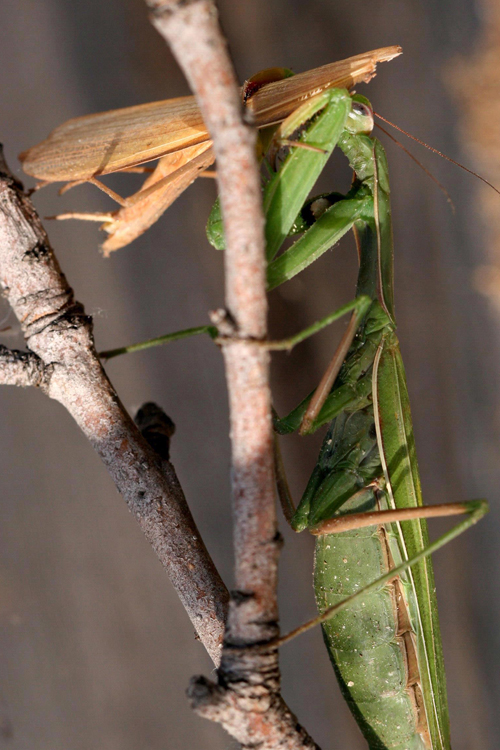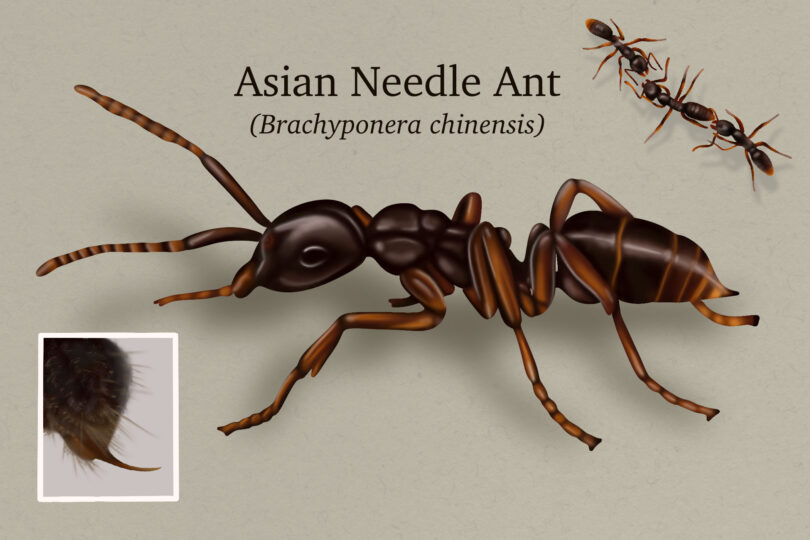Around Valentine’s Day people plan grand expressions of love for their sweethearts. Unlike humans, insects don’t have a day dedicated to love, but they do find time to romance in their own ways. Maybe people could learn a few things from them. Or, maybe not, said a University of Georgia insect expert.
“Many insect species have incredibly complex mating rituals,” said Nancy Hinkle, an entomologist with UGA Cooperative Extension.
Probably the most well-known loving insect, the lovebug gets its name from often being seen in a “romantic” embrace. A couple can remain joined in a single encounter for hours or even days.
Lovebugs are not alone in their longevity. Many insect species remain joined. While some perch and stay still, others, like damselflies, continue to fly.
Few insects, however, find only one true love. Most find many partners. For instance, some female crickets mate an average of once a day; some up to three times a day. Since each encounter requires five hours, not much time is left for eating or other activities.
The insect world does have a few staunch monogamists, however. Musk mares bond for life.
The two worlds of human and insect love do share a common similarity: In both worlds, the male often must prove himself worthy, and the female does the choosing. But the reasons may be a little different.
“Male insects, too, have to persuade females into thinking that they are worthy of their attentions,” Hinkle said. “But what arouses female insects may not be what appeals to us humans."
Some female insects produce pheromones, which are like perfumes that can be detected only by males of her species. They can attract males from miles away.
The firefly uses a seductive light show to entice a mate. The female chooses a mate based on his flash pattern. If she likes what she sees while watching from her perch, she flashes in return to help him find her.
Like a box of chocolates or a sparkly ring, some male insects offer “nuptial gifts” to entice females. The charming gifts usually consist of highly nutritious prey. Male dance flies present intended females with tempting treats sometimes enclosed in fancy gift-wrapping. But some males are all show and no substance, presenting empty silk packages.
First comes love, then comes babies. Some insect species produce many offspring from a single encounter. Indian meal moths can lay 400 eggs after mating. A single pair of houseflies can produce over a thousand maggots.
Sadly, some insects never meet their mate. The male insect leaves his sperm packet lying around. Any interested female can pick it up and use it to fertilize her eggs.
While flashy shows of affection and tempting treats are common among humans and insects, some rituals are rightly reserved for bugs.
Preying mantis females often eat their male partners. Because she can swivel her head 180 degrees, she sometimes will begin eating the male while mating. He continues to function until mating is finished. A nutritious inheritance for the developing eggs, his head and body feed the next generation.
“The millions of insect species that exist in the world have come up with innumerable ways of perpetuating themselves,” she said. “If there is a twist on sex, some insect has probably tried it.”
Tumbling flower beetles, for example, embrace and then fall from atop a flower together. Something to think about if you haven’t made Valentine’s Day plans yet.











